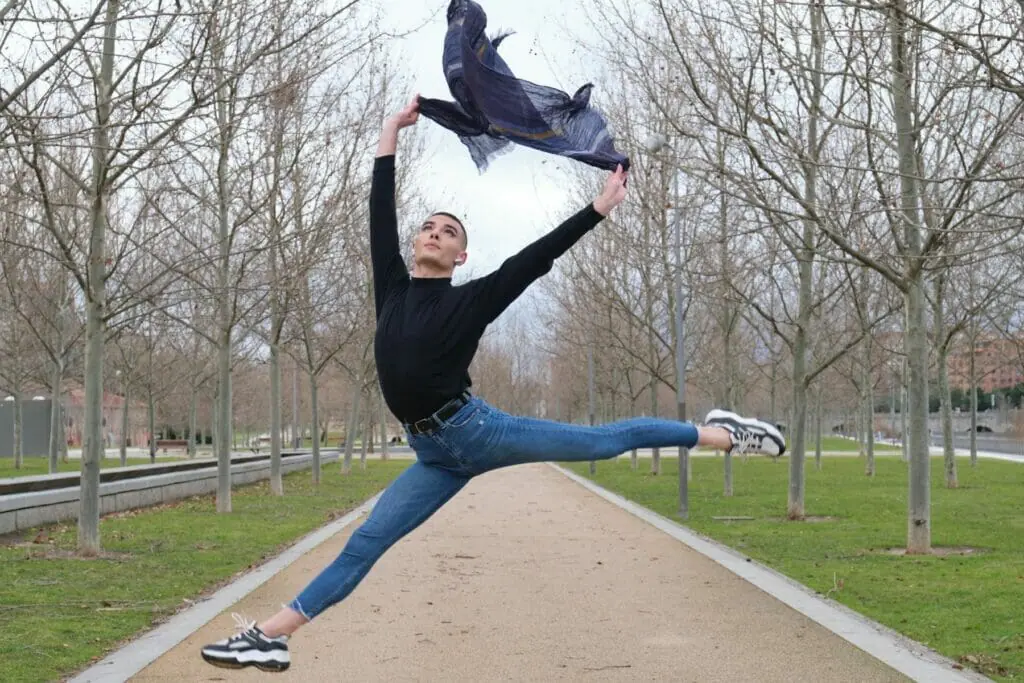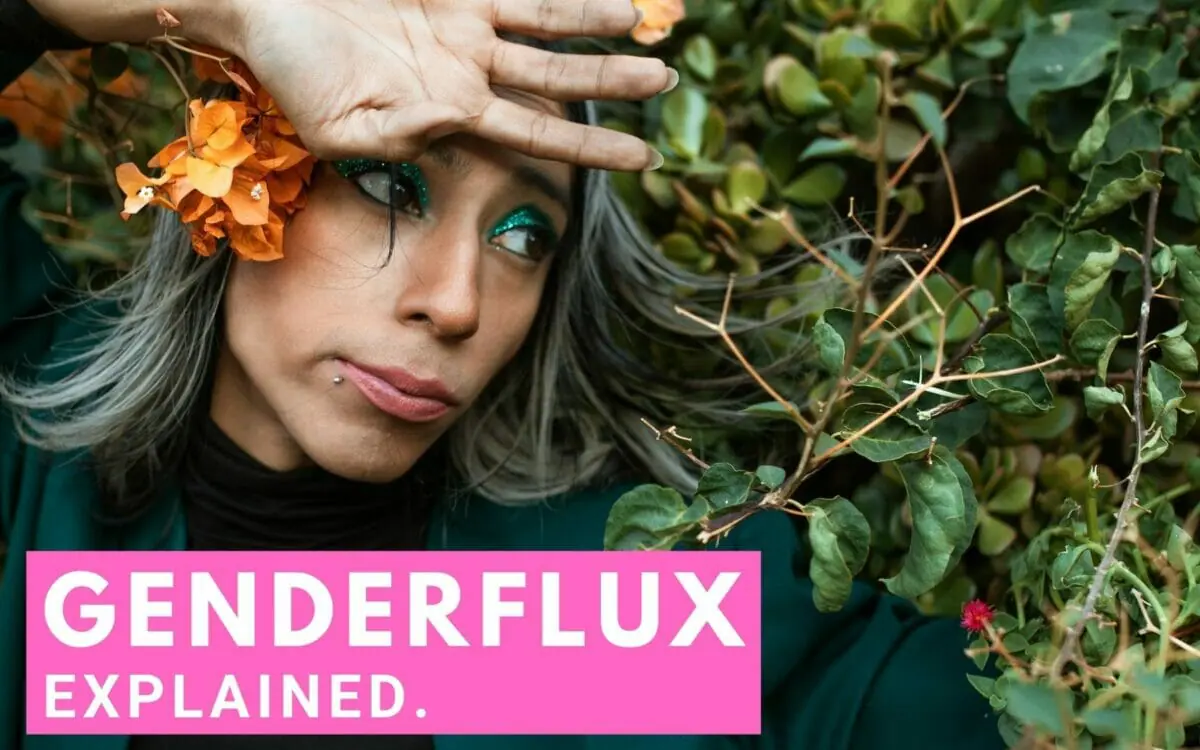Anyone can feel attached to or identify with a diversity of gender identities and/or sexual orientations. And as evermore definitions have been popularised over the years to embody the emotions and experiences of queer people, it can be hard to keep up.
If you are not totally absorbed in LGBTQ+ culture or the rainbow community, you may not appreciate these lesser-known sexual orientations and gender identities – most of which have a lack of representation in mainstream media.
One such term is genderflux, so we are going to define and cover what does genderflux mean, speak about the genderflux pride flag, and then provide some tips to help you become a better ally to genderflux people.
In this article we will cover...
What Does Genderflux Mean?
Genderflux is an umbrella term that refers to a gender identity in which the gender that one identifies with varies in intensity. Genderflux can be viewed as a form of genderfluidity.. It can be viewed on a spectrum ranging from agender to one or multiple other gender identities. Genderflux individuals may identify as transgender, genderqueer, or non-binary.
Genderflux individuals can identify as genderfluid with an agender base. However, it’s vital to understand that not all genderfluid individuals will identify as genderflux. Genderflux people can fluctuate between feeling agender (0% gendered) to feeling 100% gender. Between these two extremes, includes being slightly libragender, to being partially demigender, to feeling mostly paragender.
For instance, a girlflux person may fluctuate from being fully girl, to paragirl, then demgirl, to librafeminine, or vice versa. The main difference between genderflux and genderfluid individuals is that genderflux individuals mostly don’t change their gender. Instead, it’s the intensity of their gender that changes. A boyflux individual may experience different levels of boy such as agender, demiboy, or boy.

A boyflux individual will probably never have the experience of other genders that aren’t partially boy, boy, or agender. On the other hand, genderfluid individuals may experience, girl, boy, agender, and various other genders. While genderflux is a type of genderfluidity, the terms ‘genderflux’, and ‘genderfluid’, shouldn’t be used interchangeably as they mean totally different things.
If an individual experiences multiple genders in varying intensities, they could identify as multigender or multiflux. If only one part of someone’s gender is varying with the other part being ‘stable’, or ‘static’, this individual can identify as demiflux. If one’s gender is fluctuating and fluid at the same time, they may identify as fluidflux.
Some genderflux individuals might not experience much gender dysphoria and continue to use ‘he/him’, or ‘she/her’ pronouns even when they identify as agender or somewhere else within their grey area. Keep in mind that genderflux people have different preferences and experiences so always ask about their pronouns so you can respect them.

Genderflux Pride Flag Meaning
There are many different pride flags symbolizing most queer identities, so it should come as no surprise there is a flag for genderflux people to proudly fly.
The genderflux flag consists of six stripes. From top to bottom, it has dark pink, light pink, grey, light blue, dark blue, and yellow stripes. Here’s what the colors of the flag stand for.
- Dark pink: represents woman
- Light pink: stands for demigirl
- Grey: stands for agender
- Light blue: represents demiboys
- Dark blue: represents men
- Yellow: stands for non-binary.
Genderflux Pride Day
Education, visibility, commemoration, and appreciation are all critical in promoting global acceptance and acknowledgment of queer identities and queer folx in general. And from experience, we know it is easier for queer people to talk to friends and loved ones – and to feel the love – when a worldwide day for them is observed. Not to mention it also helps foster awareness and increased sensitivities from society at large.
Sadly however a Genderflux Pride Day has not yet been designated. But that does not stop you from marking your calendar and doing something special (even if it’s just a social media post!) next pride month!
Or any other day of the year, to be honest.
Other Information to Help You Be a Better Ally
Like other LGBTQIA+ identities, not many heterosexuals or cisgender people understand what it means to be genderflux. It is possible to come across people who have never even heard of the term. As a result, identifying as genderflux may carry unique challenges.
However, no genderflux experience is identical to another. You can’t tell whether someone is genderflux by looking at them, observing their personality, or their physical aesthetic. None of these characteristics can provide a clue as to how a person identifies, and this is as true for genderflux individuals as it is for any gender or sexual orientation.
The first thing you should do as an ally to genderflux people is to believe them when they tell you about their identity. Don’t try to argue them out of it or make the mistake of thinking you could know more about how they feel than they do. It could also help if you worked on your mindset. Working on your attitude means you challenge your concept of gender, sexuality, and sex.
After all, if you have any issues with understanding genderflux people, the root cause is bound in your understanding of gender and sexuality – not theirs. Educating yourself (as you are by reading about what does genderflux mean?) is an excellent first step to increase your awareness and not make your lack of knowledge in this area a burden on them.
There aren’t any explicit rules or guidelines, but here are some thoughts on how you can be a better ally and support a loved one as you discover what it means to be genderflux.

Put in more effort to learn about this gender identity
One of the first ways to be an ally to any LGBTQIA+ community is to read up on them. By finding out as much information about the community as you can, you are able to understand their struggles, what it may mean to identify as them, and how to support them. For instance, there’s not much information about being genderflux.
As a result, trying to learn more about this specific LGBTQ community can be frustrating. However, one way to learn about not-very-well-known identities is to search for communities they’re in. Keep in mind that the information you seek shouldn’t be for selfish gain, but for you to be able to support, understand, and protect this community.
Understand that it’s a valid identity
Sure, you may not understand how someone’s gender identity may vary in intensity. Even so, this doesn’t mean that their identity isn’t real. Other people’s feelings about their gender identity is as valid as yours so rather than calling genderflux people confused or terming their gender identity as invalid, seek to understand where they’re coming from and accept them as they are.
Remember also, that there’s no right or wrong age for someone to understand their gender identity. Some people might know and understand how they feel about their gender while they’re younger and offering them your support will go a long way in improving their well-being and mental health.

Misgendering
When you misgender someone, you use the wrong form of address for their gender, pronouns, or even name. Misgendering someone can be a malicious attempt at invalidating a person or an innocent mistake. Whichever it is, misgendering can be extremely hurtful and at times put someone’s safety at risk if their environment isn’t tolerant of the LGBTQIA+ community.
If you witness someone experiencing harassment due to their gender, you should stand up for them as an ally. If it’s you who has misgendered someone, the best thing to do would be to apologize quickly then move on. There’s no need to make a show about what you’ve done because you will make the person you misgendered feel uncomfortable.
When genderflux people feel agender, they might express how they feel outwardly by embracing androgynous fashion. This may make someone misgender them. However, remember that it’s your responsibility to find out what someone’s preferred pronouns are rather than making assumptions about them.
Be an Advocate
One of the best qualities of a good ally is being an advocate. If you are trying not to cause any harm but aren’t actively trying to make things easier for genderflux people, you aren’t being a good ally. A good ally actively supports and advocated for the justice and equity of genderflux people.
A good ally is honest and understands that they have some biases. These biases, however, shouldn’t stop you from engaging genderflux people. Be more inviting and consider the fact that many genderflux people may not be so open about their identity because of past experiences. Make sure that your actions and your words indicate that you are open and ready to be inclusive.
It’s vital to acknowledge that being in the LGBTQIA+ community might affect how someone experiences and navigates through different settings in life so it’s vital to respect other people’s comfort levels.





